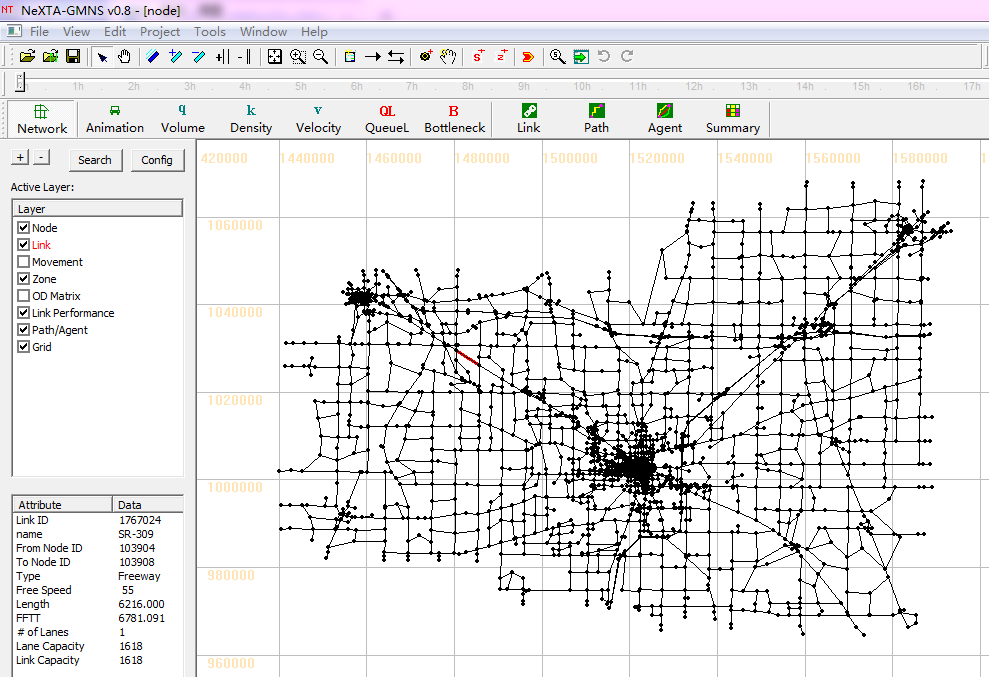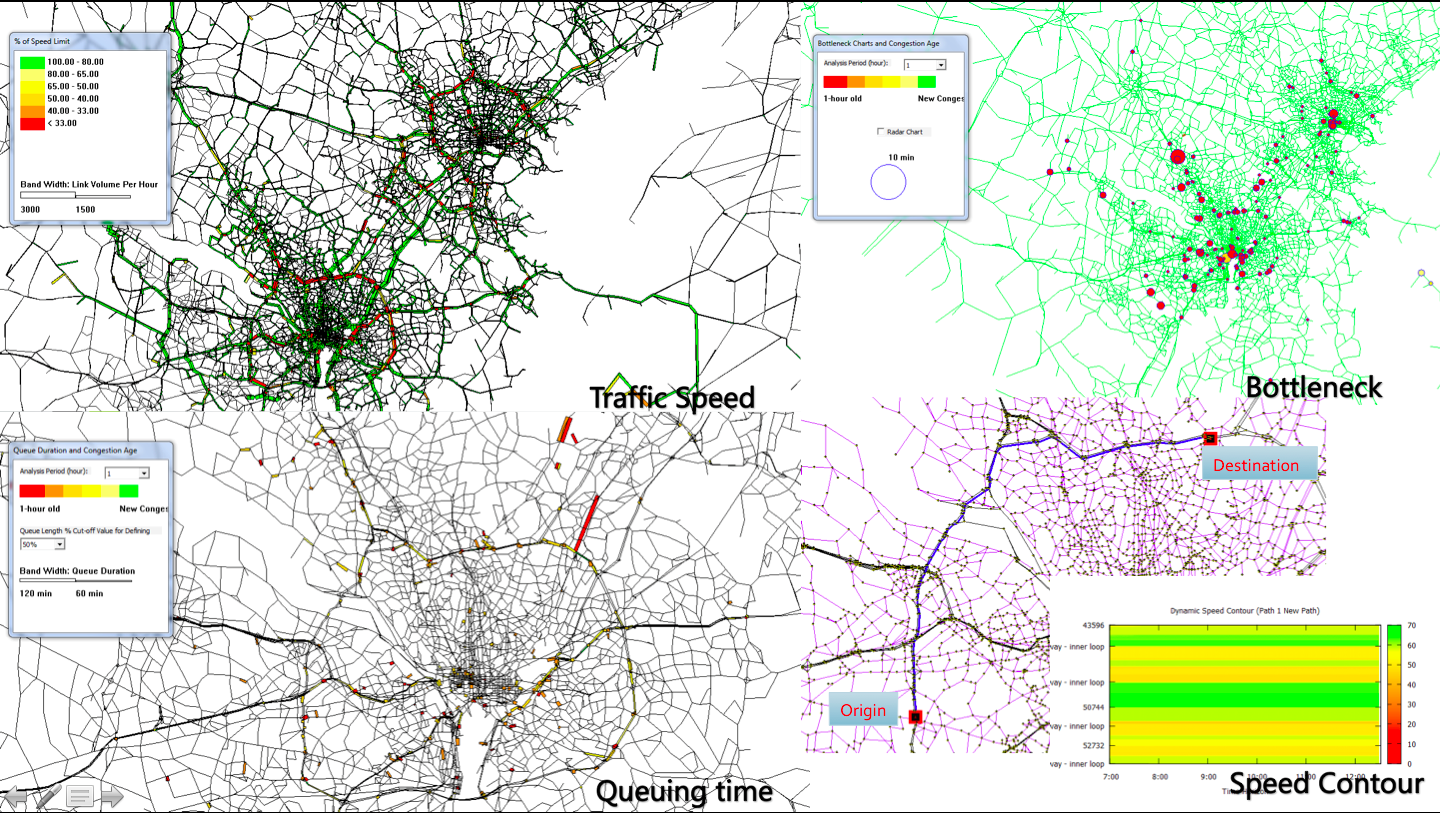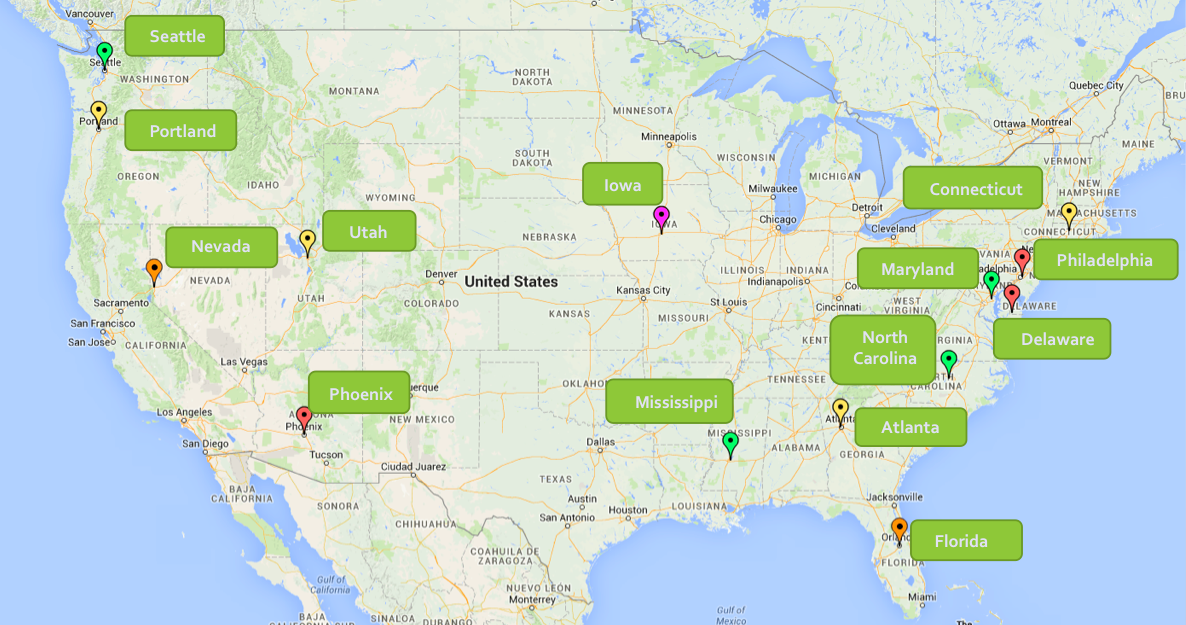This site mains the source code and Windows-based release for DTALite+NeXTA package. DTALite is an open-source AMS library for efficiently macroscopic and mesoscopic traffic assignment based on General Modeling Network Specification (GMNS) format. NeXTA as a visualization tool for transportation Analysis, Modeling, and Simulation (AMS), developed through the support of a FHWA study.
Remarks:
-
For the Python version of DTALite and Path4GMNS package portable on Windows, Linux and MacOS, please go to https://github.com/jdlph/Path4GMNS.
-
Please download latest DTALite-NeXTA package, which follows calendar versioning. Here are the user guides for NeXTA and NeXTA+QGIS using GMNS data format. We have prepared a number of self-learning documents too.
Zhou, Xuesong, and Jeffrey Taylor. "DTALite: A queue-based mesoscopic traffic simulator for fast model evaluation and calibration." Cogent Engineering 1.1 (2014): 961345.
Marshall, Norman L. "Forecasting the impossible: The status quo of estimating traffic flows with static traffic assignment and the future of dynamic traffic assignment." Research in Transportation Business & Management 29 (2018): 85-92.
NeXTA/DTALite Workshop Webinar by Jeff Taylor
Mini-lessson : What is the best way to learn dynamic traffic simulation and network assignment for a beginner? Do you want to integrate a powerful traffic simulator in your deep learning framework? We would like to offer a collaborative learning experience through 500 lines of python codes and real-life data sets. This is part of our mini-lessons through teaching dialog.
C++ source codes
Python source code
1. Parallel computing algorithms: Qu, Y., & Zhou, X. (2017). Large-scale dynamic transportation network simulation: A space-time-event parallel computing approach. Transportation research part c: Emerging technologies, 75, 1-16.
2. OD demand estimation: Lu, C. C., Zhou, X., & Zhang, K. (2013). Dynamic origin–destination demand flow estimation under congested traffic conditions. Transportation Research Part C: Emerging Technologies, 34, 16-37.
3. Simplified emission estimation model: Zhou, X., Tanvir, S., Lei, H., Taylor, J., Liu, B., Rouphail, N. M., & Frey, H. C. (2015). Integrating a simplified emission estimation model and mesoscopic dynamic traffic simulator to efficiently evaluate emission impacts of traffic management strategies. Transportation Research Part D: Transport and Environment, 37, 123-136.
4. Eco-system optimal time-dependent flow assignment: Lu, C. C., Liu, J., Qu, Y., Peeta, S., Rouphail, N. M., & Zhou, X. (2016). Eco-system optimal time-dependent flow assignment in a congested network. Transportation Research Part B: Methodological, 94, 217-239.
5. Transportation-induced population exposure assessment: Vallamsundar, S., Lin, J., Konduri, K., Zhou, X., & Pendyala, R. M. (2016). A comprehensive modeling framework for transportation-induced population exposure assessment. Transportation Research Part D: Transport and Environment, 46, 94-113.
6. Integrated ABM and DTA: Xiong, C., Shahabi, M., Zhao, J., Yin, Y., Zhou, X., & Zhang, L. (2020). An integrated and personalized traveler information and incentive scheme for energy efficient mobility systems. Transportation Research Part C: Emerging Technologies, 113, 57-73.
7. State-wide transportation modeling: Zhang. L. (2017) Maryland SHRP2 C10 Implementation Assistance – MITAMS: Maryland Integrated Analysis Modeling System, Maryland State Highway Administration
8. Workzone applications: Schroeder, B, et al. Work zone traffic analysis & impact assessment. (2014) FHWA/NC/2012-36. North Carolina. Dept. of Transportation. Research and Analysis Group.
nexta
nexta
DTALite/NeXTA applications in the United States
maps


